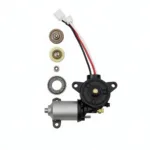Car diagnostic images are crucial for understanding and resolving vehicle issues. They provide a visual representation of the data collected by diagnostic tools, offering valuable insights into the inner workings of your car. From simple OBD-II scanners to advanced diagnostic software, interpreting these images is essential for both DIY enthusiasts and professional mechanics.
Understanding the Importance of Car Diagnostic Images
Diagnostic images offer a wealth of information that goes beyond simple error codes. They can pinpoint the exact location of a problem, track changes in sensor readings over time, and even predict potential future issues. This visual data allows for more accurate diagnoses and more efficient repairs, saving both time and money. For example, a graph of oxygen sensor readings can reveal a failing sensor much more effectively than a generic error code. This level of detail is invaluable for getting to the root cause of a problem.
Types of Car Diagnostic Images
Car diagnostic images come in various forms, each serving a specific purpose. Some common types include:
- Graphs: These visually represent data changes over time, such as sensor readings, engine RPM, or fuel pressure. They are crucial for understanding trends and identifying intermittent problems.
- Wiring Diagrams: These detailed schematics show the electrical connections within a vehicle, helping to trace wiring faults and understand complex electrical systems.
- Component Locations: These images pinpoint the physical location of components within the engine bay or other areas of the car, making it easier to access and inspect them.
- Freeze Frame Data: These snapshots capture the vehicle’s operating conditions at the moment a fault code was triggered, providing valuable context for diagnosis.
- Scope Readings: Oscilloscope readings offer a detailed view of electrical signals, allowing for precise diagnosis of sensor and actuator problems.
How to Interpret Car Diagnostic Images
Interpreting car diagnostic images requires a basic understanding of automotive systems and the specific diagnostic tool being used. Familiarizing yourself with common patterns and anomalies is essential. For instance, a sudden drop in fuel pressure on a graph could indicate a failing fuel pump. Cross-referencing the image data with other diagnostic information, such as error codes and symptoms, can help paint a complete picture of the problem.
Common Diagnostic Image Misinterpretations
One common mistake is focusing solely on the image without considering other factors. A seemingly abnormal reading might be normal under certain operating conditions. It’s crucial to consider the context of the image and consult reliable resources like repair manuals or online databases. Another pitfall is misinterpreting complex images like scope readings without sufficient training. Seeking expert advice is always recommended when dealing with unfamiliar diagnostic data.
The Future of Car Diagnostic Images
With advancements in technology, car diagnostic images are becoming increasingly sophisticated. 3D models and augmented reality are starting to be integrated into diagnostic software, allowing for a more interactive and intuitive understanding of vehicle systems. These advancements are making it easier than ever to diagnose and repair complex automotive problems.
Car Diagnostic Images: Empowering DIYers and Professionals
Car diagnostic images are an invaluable tool for anyone working on vehicles. Whether you’re a seasoned mechanic or a DIY enthusiast, understanding these images can empower you to make informed decisions about your car’s maintenance and repair. They bridge the gap between complex data and practical solutions, ultimately leading to a better understanding of your vehicle’s health.
Conclusion
Car diagnostic images are a cornerstone of modern vehicle repair, offering invaluable insights into the complex workings of today’s automobiles. By understanding how to interpret these visual representations of data, both DIYers and professionals can effectively diagnose and resolve car problems, saving time and money.
FAQ
- What are car diagnostic images? Car diagnostic images are visual representations of data collected by diagnostic tools, helping to identify and understand vehicle issues.
- Why are car diagnostic images important? They provide detailed information beyond error codes, allowing for more accurate diagnoses and efficient repairs.
- What are some common types of car diagnostic images? Common types include graphs, wiring diagrams, component locations, freeze frame data, and scope readings.
- How can I learn to interpret these images? Familiarize yourself with automotive systems, common patterns, and consult reliable resources.
- What are some common misinterpretations of diagnostic images? Focusing solely on the image without considering other factors and misinterpreting complex images without proper training.
- How is technology impacting car diagnostic images? Advancements like 3D models and augmented reality are making diagnostic images more interactive and intuitive.
- Who can benefit from understanding car diagnostic images? Both DIY enthusiasts and professional mechanics can benefit from the insights these images provide.
Need help with your car diagnostics? Contact us via WhatsApp: +1(641)206-8880 or Email: [email protected]. Our 24/7 customer support team is ready to assist you.


